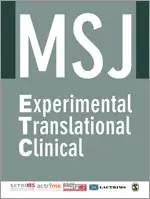Secondary progressive multiple sclerosis (SPMS) represents a significant phase in the development of multiple sclerosis, but it is often difficult to diagnose accurately. A study conducted in five European countries utilized objective classifiers to determine the proportion and characteristics of SPMS in various multiple sclerosis patient registries, including the national ReMuS Registry. The findings suggest that SPMS may be systematically underdiagnosed in these registries. This article provides a detailed comparison of the methods used for SPMS classification and their results in each of the involved registries.

Forsberg, L., Spelman, T., Klyve, P., Manouchehrinia, A., Ramanujam, R., Mouresan, E., Drahota, J., Horakova, D., Joensen, H., Pontieri, L., Magyari, M., Ellenberger, D., Stahmann, A., Rodgers, J., Witts, J., Middleton, R., Nicholas, R., Bezlyak, V., Adlard, N., Hach, T., Lines, C., Vukusic, S., Soilu-Hänninen, M., van der Walt, A., Butzkueven, H., Iaffldano, P., Trojano, M., Glaser, A., Hillert, J., SPMS Research Collaboration Network (2023). Proportion and characteristics of secondary progressive multiple sclerosis in five European registries using objective classifiers. In Multiple Sclerosis Journal - Experimental, Translational and Clinical (Vol. 9, Issue 1, p. 205521732311535). SAGE Publications. https://doi.org/10.1177/20552173231153557 PMID: 36816812
Abstract
Background: To assign a course of secondary progressive multiple sclerosis (MS) (SPMS) may be difficult and the proportion of persons with SPMS varies between reports. An objective method for disease course classification may give a better estimation of the relative proportions of relapsing-remitting MS (RRMS) and SPMS and may identify situations where SPMS is under reported.
Materials and methods: Data were obtained for 61,900 MS patients from MS registries in the Czech Republic, Denmark, Germany, Sweden, and the United Kingdom (UK), including date of birth, sex, SP conversion year, visits with an Expanded Disability Status Scale (EDSS) score, MS onset and diagnosis date, relapses, and disease-modifying treatment (DMT) use. We included RRMS or SPMS patients with at least one visit between January 2017 and December 2019 if ≥ 18 years of age. We applied three objective methods: A set of SPMS clinical trial inclusion criteria („EXPAND criteria“) modified for a real-world evidence setting, a modified version of the MSBase algorithm, and a decision tree-based algorithm recently published.
Results: The clinically assigned proportion of SPMS varied from 8.7% (Czechia) to 34.3% (UK). Objective classifiers estimated the proportion of SPMS from 15.1% (Germany by the EXPAND criteria) to 58.0% (UK by the decision tree method). Due to different requirements of number of EDSS scores, classifiers varied in the proportion they were able to classify; from 18% (UK by the MSBase algorithm) to 100% (the decision tree algorithm for all registries). Objectively classified SPMS patients were older, converted to SPMS later, had higher EDSS at index date and higher EDSS at conversion. More objectively classified SPMS were on DMTs compared to the clinically assigned.
Conclusion: SPMS appears to be systematically underdiagnosed in MS registries. Reclassified patients were more commonly on DMTs.
Entire paper is available in English on the website of the Multiple Sclerosis Journal - Experimental, Translational and Clinical.

